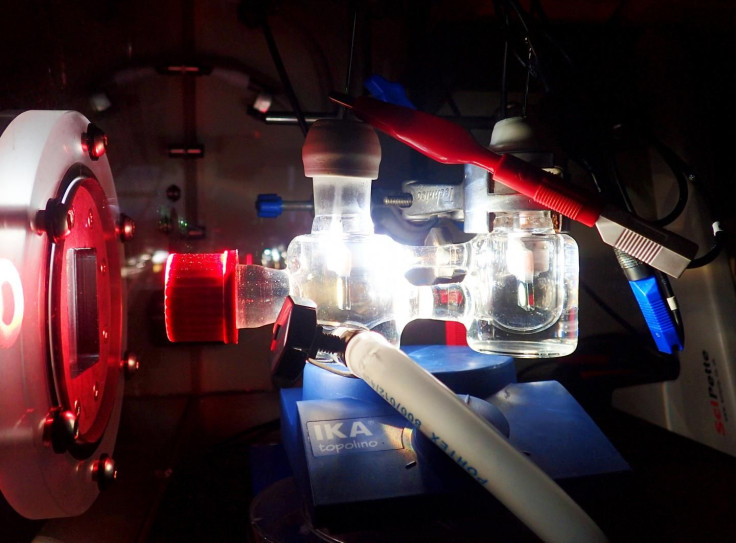New Semi-Artificial Photosynthesis Technique Converts Sunlight Into Fuel

Scientists have long seen hydrogen as the fuel of the future, something that could be harnessed from water bodies present across the globe and serve as an unlimited source of renewable energy. The possibilities of hydrogen fuel would be endless, but despite such potential, the mission to convert water into hydrogen has not been accomplished, thanks to the lack of emission-free technologies.
Now, as part of the same effort, a group of scientists hailing from the United Kingdom has developed a technique that works pretty much like natural photosynthesis and produces hydrogen by using water and sunlight. They have called it "semi-artificial photosynthesis."

In the natural process of photosynthesis, plants and trees use sunlight to "split" water molecules into its main constitutes — oxygen and hydrogen. The former of the two makes up nearly all of the oxygen we use to breathe, but the latter isn’t enough to be leveraged and stored as fuel.
“Natural photosynthesis is not efficient because it has evolved merely to survive so it makes the bare minimum amount of energy needed — around 1-2 percent of what it could potentially convert and store,” Katarzyna Sokół, a Ph.D. student at University of Cambridge and one of the authors of the work, said in a statement.
As the method was emission-free but could not be leveraged in the same way, scientists started working on artificial photosynthesis. These techniques, which have been around for decades, can work, but cannot be scaled to an industrial level at the moment. The problem is the requirement of expensive and toxic catalysts or substances that accelerate a chemical reaction, without undergoing any chemical change themselves.
The inapplicability of fully artificial techniques prompted the team from University of Cambridge and Ruhr University Bochum to look into semi-artificial photosynthesis, where the best of both worlds — biological components and manmade technologies — could be combined to achieve the desired solar-driven water-splitting reaction.
With this idea, the group used highly efficient biological enzymes, including key algae enzyme hydrogenase, as catalysts and combined them with synthetic materials in solar devices.
“Hydrogenase is an enzyme present in algae that is capable of reducing protons into hydrogen,” Sokół added. “During evolution, this process has been deactivated because it wasn’t necessary for survival but we successfully managed to bypass the inactivity to achieve the reaction we wanted — splitting water into hydrogen and oxygen.”
As the team expected, the technique was successful in overcoming the limitations of fully artificial photosynthesis and producing hydrogen. It even absorbed more sunlight than that used by plants in natural photosynthesis and improved on the amount of energy produced and stored.
While the “milestone” research demonstrated semi-artificial photosynthesis could be the key to produce unlimited hydrogen fuel in the future, the researchers have stressed that this is just a proof-of-concept and the prototype system needs to be evolved to produce sophisticated, not to mention, scalable systems for solar energy conversion.
“It’s exciting that we can selectively choose the processes we want, and achieve the reaction we want which is inaccessible in nature,” Sokół concluded. “This could be a great platform for developing solar technologies. The approach could be used to couple other reactions together to see what can be done, learn from these reactions and then build synthetic, more robust pieces of solar energy technology.”
The study, titled “Bias-free photoelectrochemical water splitting with photosystem II on a dye-sensitized photoanode wired to hydrogenase,” was published Sept. 3 in the journal Nature Energy.
© Copyright IBTimes 2024. All rights reserved.





















